View basket (0 items $0.00)
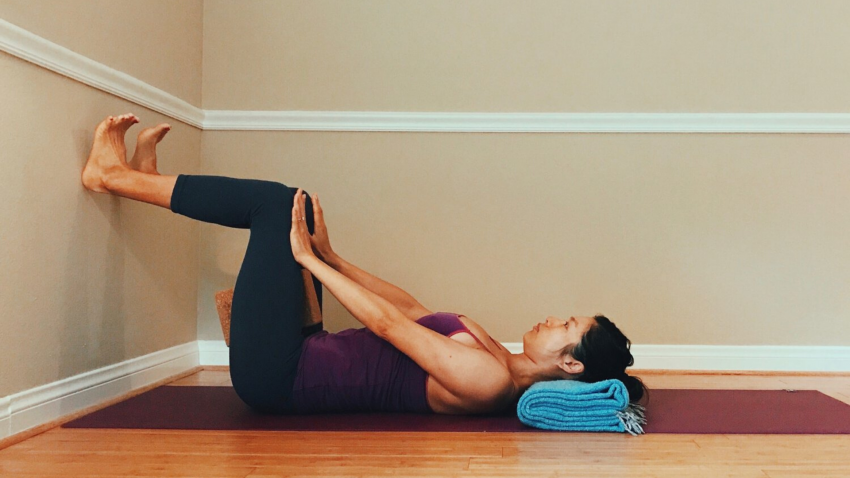
Postpartum Pooch: A Yoga Sequence for Diastasis Recti
Diastasis recti is the vertical splitting of the rectus abdominus muscle, the muscle that produces the iconic “washboard abs” or “six-pack” along its centerline. To some degree, it occurs in all women during pregnancy and can be measured using finger widths. At the end of pregnancy, my diastasis was three finger widths. With the focused work shown in this series, it is now one finger width.
Diastasis recti is a normal function of pregnancy that occurs in order to accommodate the uterus and growing baby, the placenta, and the repositioning of the abdominal organs. Oftentimes it appears in tandem with pubic symphysis diastasis (or SPD, symphysis pubis dysfunction), a separation of the pubic symphysis joint at the anterior pelvis. For some women, the abdominal splitting is relatively minor and does not cause pain or dysfunction, and naturally rejoins after pregnancy. For others, the separation of this superficial abdominal muscle can be uncomfortable or painful and requires focused attention to heal.
The key is to draw the separated abdominal muscles together by first learning to identify and engage the deepest abdominal muscles, the transverse abdominis. This will then allow the superficial “top” muscles of the rectus abdominis to recover in a more functional manner.
A Yoga Sequence for Diastasis Recti
-
Find a wall space and gather your props—a yoga mat and yoga block.
-
Place your mat perpendicular to the wall.
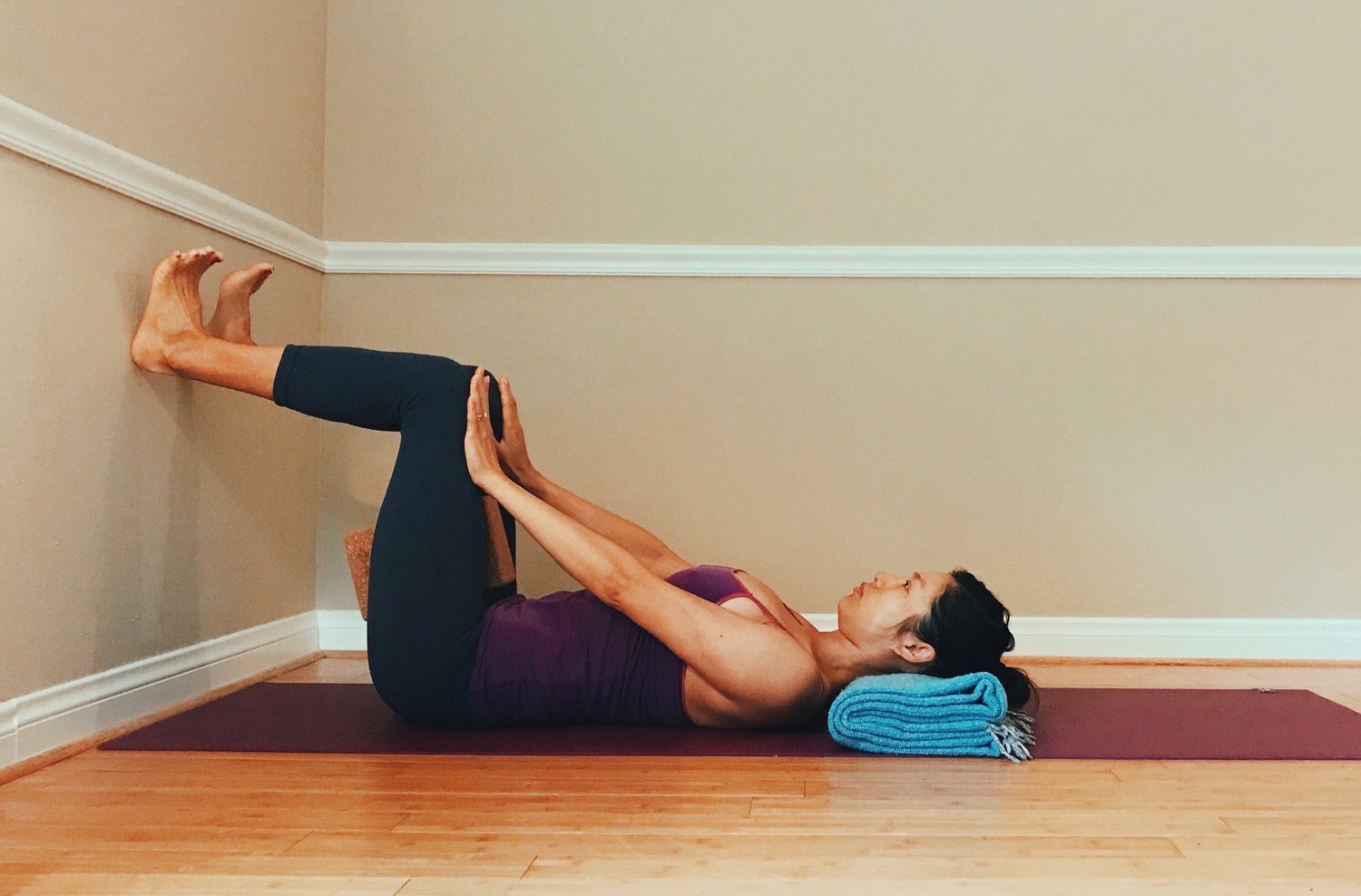
3. Lie on your back with your knees bent and your feet a foot or so away from the wall. Place the soles of your feet against a wall so that your thighs are vertical and your shins are parallel to the floor. Adjust your distance from the wall as needed.
4. Place a block, in its narrowest dimension, between your thighs, close to the pubic bones.
5. Elongate your low back without losing its curve and flattening it to the ground. Press your palms into the thighs and straighten the arms. Keeping only your heels on the wall, engage the shin muscle (anterior tibialis) by pulling your toes up toward your knees.
6. Squeeze the block, push your hands into your thighs, and feel as if you can pull your thigh muscles down into the belly. If done correctly, your low back will not further lift away from the floor; nor will your ribs push up toward the ceiling. This can be as light or strong an action as is beneficial.
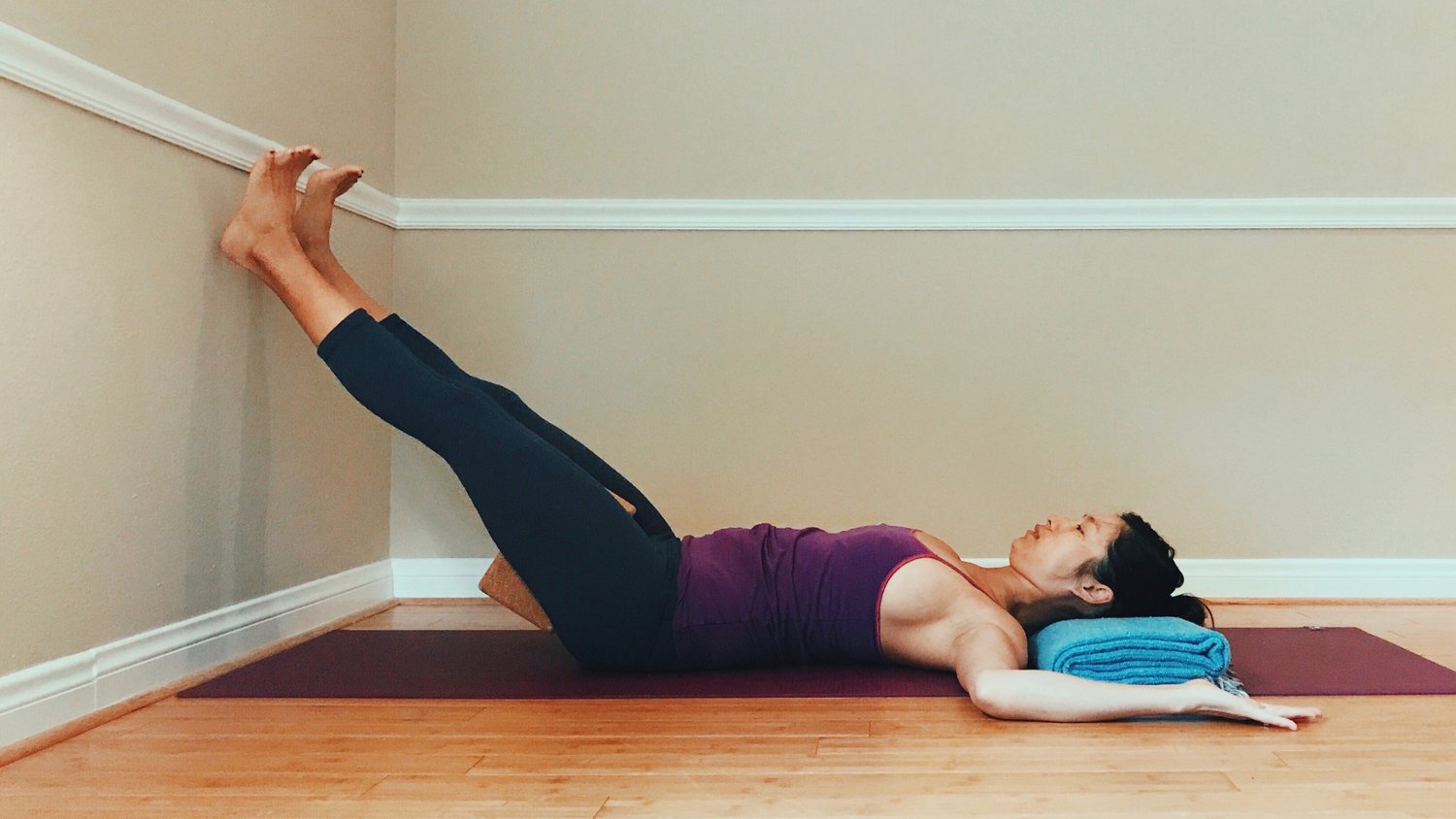
7. Extend your arms straight outward from your shoulders, resting them on the floor with your elbows in a 90-degree angle, in Cactus Arms, or up overhead (ranked from easiest to most difficult).
8. Keeping the heels against the wall, straighten the legs. Squeeze the block, engage the deep abdominal muscles, and breathe.
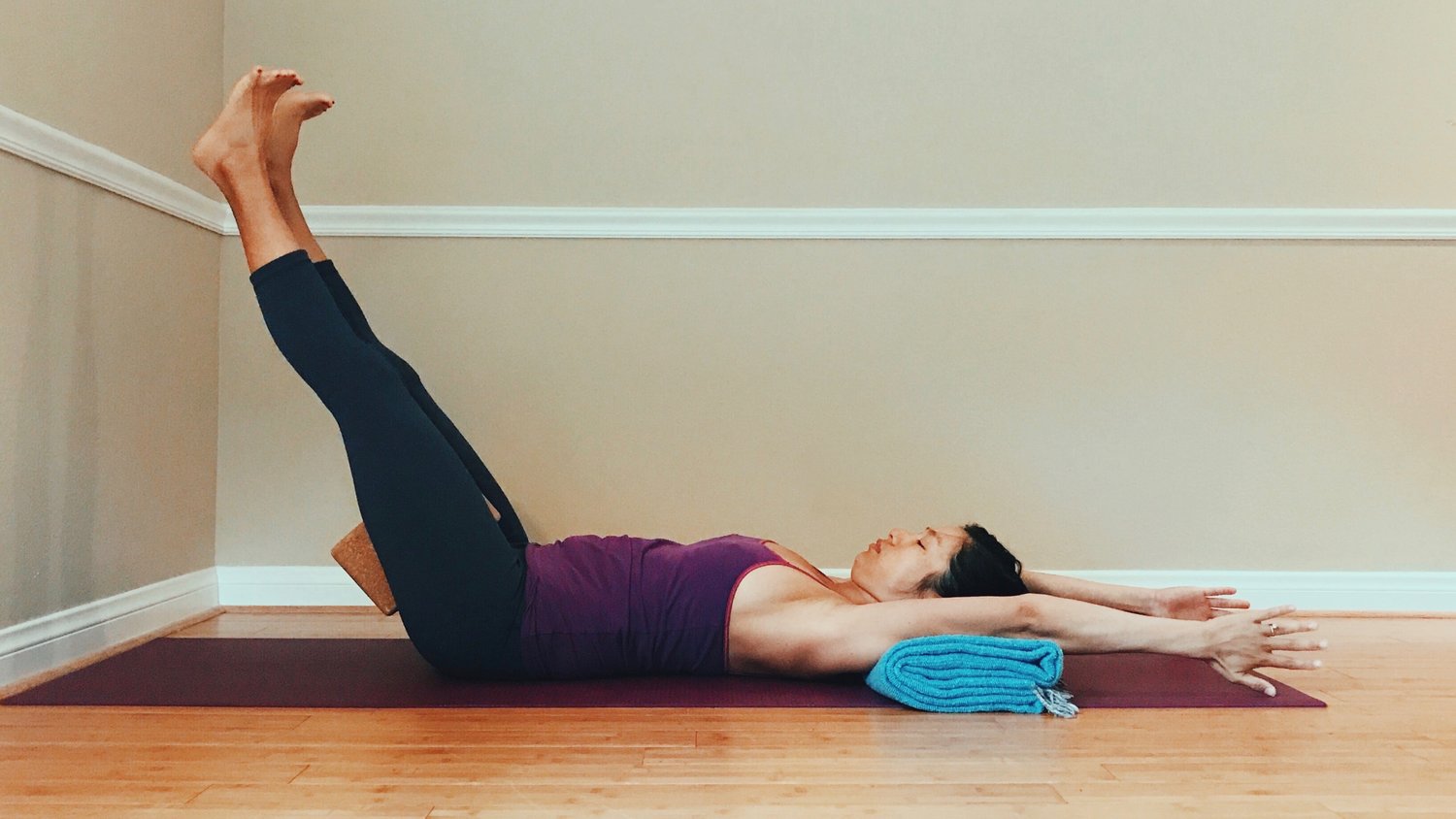
9. For more of a challenge, do this same exercise with the feet off the wall and arms overhead. If there is a bulging of the abdomen, particularly at the site of the diastasis (it can occur at the navel, below or above the navel, or all along the central axis), then this could worsen the separation. It is essential to increase the load only if you are able to safely and effectively do the previous exercises.
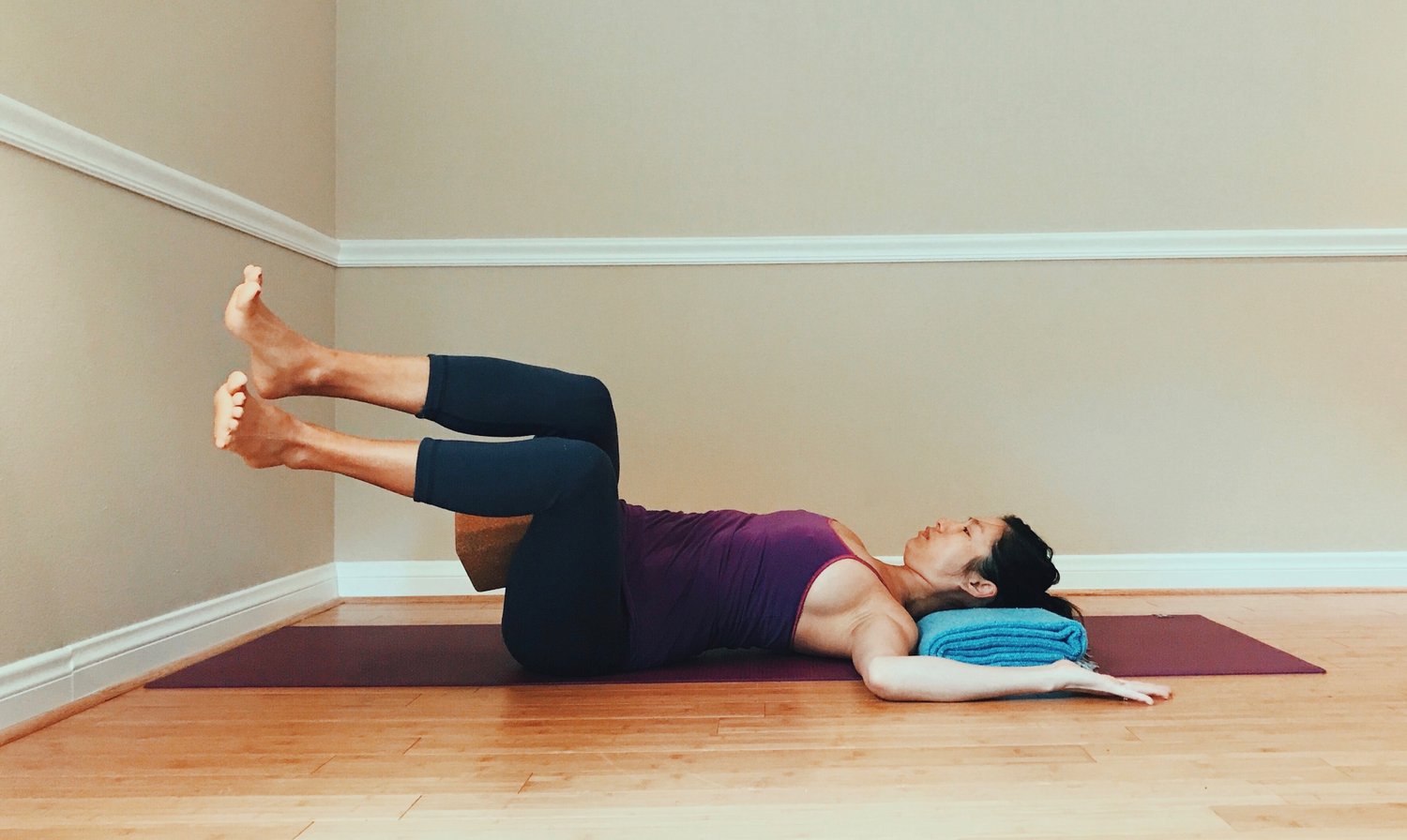
10. Once you are able to locate and engage the transverse abdominis muscles, add a twist to the pose to work on the oblique muscles. Squeeze the block and imagine lifting the lower leg up into the upper leg. Draw the navel down and turn the chest. Stay and breathe, then switch sides. Rest as needed.
Reprinted with permission from ellen.yoga

Ellen Huang Saltarelli is a yoga teacher known for fun and creative use of props, intelligent sequencing toward a peak pose, and her signature style, Prop Flow, which combines supported alignment with vinyasa flow.
Ellen first discovered yoga while a student at UCLA in 2003, and began teaching in NYC in 2006. Her understanding and study of the body is informed by both the Western approach of skeletal-muscular anatomy, under the training of renowned teacher Alison West, as well as the Eastern approach of the subtle, energetic body. She is passionate about sharing her love and knowledge of yoga to bring awareness, healing, and growth to her students and community.
Ellen’s streaming class schedule can be found on her website, ellen.yoga or follow her @ellen.yoga
Featured Courses








